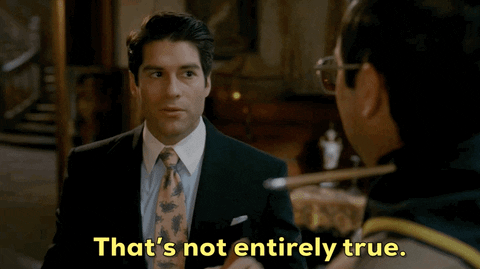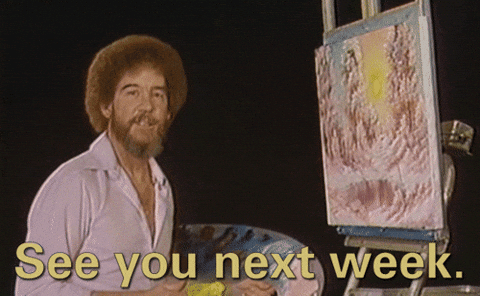Common Misconceptions about Product Management
When I first decided to understand product management during my transition, I did what any curious person would do, I Googled it.
Big mistake.
By the fifth tab, I was more confused than enlightened. One article said a product manager is the “CEO of the product.” Another insisted I needed to learn to code. A third one talked about backlogs and roadmaps as if that was the whole job. The deeper I went, the murkier it got.
Interestingly enough, this isn’t an original experience.
Product management is one of the most misunderstood roles in tech. This is because the role cuts across design, engineering, marketing, operations and yet, it fully belongs to none of them. That ambiguity leaves a lot of room for lots of misinformation to grow and spread. Misconceptions that confuse aspiring PMs, frustrate cross-functional teams, and distort what success in the role really looks like.
In this article, I’m unpacking 7 popular misconceptions about product management, the ones I believed, the ones I’ve heard repeated in interviews and the ones that still sneak into conversations today. If you’re trying to break into the field, work more effectively as a PM, or simply want to understand the job better, this piece is for you.
Let’s get clear on what product management is actually about.
1: “Product Managers are the CEOs of their Products”
At some point early in your product career, someone will drop the line: “As a PM, you’re basically the CEO of your product.”
It’s meant as a compliment. It sounds empowering. Strategic. Executive.
But if you take it literally, especially as a new product manager, you're in for a rude awakening. This is why:
A CEO sets vision and direction, but also has executive control over headcount, hiring, compensation, investor relations, and often, the final word. A product manager, by contrast, operates in a completely different power structure:
You don’t approve budgets or allocate resources.
Your engineers and designers don’t (directly) report to you.
You need buy-in and can’t make unilateral decisions.
You’re constantly negotiating trade-offs across teams you don’t manage.
In truth, PMs are responsible for a product’s success without direct authority over most of the variables that determine that success. It’s accountability without ownership. Influence without control. Pressure without the power to pull rank.
If anything, a product manager is more like a chief diplomat working through alignment, managing competing interests, and translating between technical, commercial, and user-facing realities.
The real danger of the “CEO of the product” misconception isn’t just that it’s inaccurate, it’s that it sets the wrong expectations for how PMs operate. New PMs who internalise this idea can mistakenly adopt a command-and-control posture, pushing decisions through instead of facilitating alignment. Teams, in turn, can resist this false sense of ownership, leading to friction and distrust.
Here’s a better way to look at it : A good PM creates clarity, not control. They lead through influence, not authority. They don’t own the product in the way a CEO owns a company. They hold the threads, the tension, and the vision, while empowering others to bring it to life.
So no, you’re not the CEO of the product. You’re something more nuanced, more difficult, and arguably more impactful: the person who holds space for complexity and moves it forward.
2. “Product Managers Need to Have a Technical Background”
This misconception persists like a stubborn bug in production, especially in tech-heavy environments. The notion is simple: if you don’t have a Computer Science degree, if you can’t read or write code, you have no business being a product manager.
Not only is this untrue, it’s a dangerous filter that has kept far too many capable, strategic thinkers out of the role.
Let’s be clear: you don’t need to be technical to be a great PM, but you do need to be technically literate. There’s a difference.
You should be able to:
Understand how systems and architecture fit together.
Ask the right questions and understand trade-offs.
Interpret Technical documentation and know when something is high effort.
Communicate fluently with engineers, and most importantly, earn their trust.
But that doesn’t mean you need to write production-ready code or diagnose a failing deployment. You’re not a backup engineer. Your job is to connect customer needs with business goals and technical feasibility, not to be the one building the solution.
That said, it’s worth noting that In recent years, we’ve seen the rise of specialised technical product manager roles : TPMs who work on APIs, infrastructure, data platforms, or deeply technical products where hands-on engineering is a requirement.
If you come from a technical background and enjoy the low-level details, those roles are an excellent fit. But they’re not the industry standard. And they should never become the default measure for whether someone can succeed in a product role.
In fact, great product managers often come from non-technical backgrounds: law, marketing, operations, customer success and so on. What makes them effective isn’t their ability to code, but their ability to learn fast, listen well, and think critically about product decisions across disciplines.
If anything, technical overconfidence can be just as risky as ignorance. PMs who rely too heavily on their coding background sometimes fall into the trap of solutioning too early, or trying to make engineering decisions for the team undermining collaboration in the process.
3. “Product Management Is the Easiest Way Into Tech”
“I don’t want to learn to code… maybe I’ll be a PM?”
I can’t tell you how many times I’ve heard that line in career pivot circles , especially from people outside of tech, or in roles adjacent to product.
Yes, product management can be a great path into tech from non-technical backgrounds. But let me be clear: it is not an easy path.
PM is where ambiguity lives. It’s where no one gives you answers, but everyone expects clarity. It’s where you sit in the middle of user needs, engineering constraints, business targets, legal landmines, and executive pressure and try to make progress anyway.
You won’t need to write code, but you’ll need to deeply understand how code becomes value. You won’t need to design the interface, but you’ll need to recognise what makes it usable, accessible, and delightful. And you’ll be constantly asked to translate between worlds: technical, commercial, regulatory and so much more.
The problem with the “easy entry point” misconception is that it sets people up for the wrong expectations. It trivialises the leadership and skill the role requires. And worse, it creates PMs who view the role as a stepping stone to somewhere else, instead of committing to the craft itself.
Here’s the thing: Product management is a deeply rewarding, high-leverage role especially if you love solving problems, aligning people, and chasing outcomes. But if you’re here because it sounds like a soft landing, you’ll find out quickly: it’s soft in neither pace nor pressure.
So yes, you can absolutely pivot into tech through product. And I wouldn’t trade the experience for anything. But make sure you're not running from difficulty, because product management doesn’t eliminate it. It gathers it all in one place and hands it to you.
4. “Product Management Is the Same as Project Management”
At first glance, the roles may sound similar.
They both involve planning. Both deal with teams and deadlines. Both are expected to “make things happen.”
So it’s easy, especially from the outside, to assume product management and project management are interchangeable. But once you’ve spent even a little time in either role, the difference becomes clear.
Project managers focus on delivery. Product managers focus on direction.
A project manager ensures the trains run on time. A product manager decides where the train should be going in the first place and whether it should even be a train.
Product managers define the why and what of a product:
What problem are we solving?
Who are we solving it for?
What does success look like?
Project managers own the how and when:
What are the dependencies?
Are we on track?
How do we mitigate risks?
One analogy I often use is this: The project manager is like a midwife focused on helping you deliver the baby. They bring structure, timing, and process. They’re deeply involved in the preparation and delivery. Most times, the job ends after delivery.
But the product manager is the mother, the one who made the decision to bring something into the world, nurtured it through conception, and is responsible for everything after it arrives. Because delivery isn’t the end. It’s just the beginning.
A PM’s job continues well beyond the “launch.”
They’re the ones watching how the product behaves in the wild, iterating, evolving, and growing it toward long-term value and success.
Interestingly, here’s where the nuance kicks in:
As a product manager, you still need project management skills.
Even when you work with a dedicated project manager (and often, you won’t), you’re expected to drive execution, prevent scope creep, resolve ambiguity, and keep initiatives moving forward to ensure the product gets over the line.
So no, product and project management aren’t the same.
But great product managers know how to wear both hats when needed.
They understand direction, and they respect delivery.
Because building the right thing is only half the battle. Getting it out the door and into users’ hands, is the other half.
5.“Good Product Managers Build Exactly the Solution Customers Ask Them to Build”
One of the first things you’re taught in product management is to be “customer-centric.”
Listen to your users. Talk to them. Stay close to their pain points.
All good advice until it quietly morphs into something else:
“Just give the customer what they asked for.”
At first glance, it seems like the responsible, responsive thing to do.
But great product management is not about building on command.
It’s about listening deeply and then solving the problem behind the request.
Customers will describe what they think they need, usually in the form of a feature:
“I just need a dashboard with all the filters.”
“If you added a download button here, this would be perfect.”
“Can you send me an alert every time someone clicks this?”
But what they’re often surfacing isn’t a solution, it’s a symptom of a bigger (or smaller problem.
Your job is to slow the conversation down and ask:
Why do they need this?
What outcome are they chasing?
What are they actually trying to do?
Sometimes the download button isn’t the issue, it’s that the user doesn’t trust they’ll find that data later.
Sometimes they don’t need 12 filters, they need a way to monitor one metric that matters.
The danger of building to request is that you might deliver what they asked for, but not what they truly needed.
And when that happens, you lose trust.
Being customer-centric doesn’t mean doing what you’re told.
It means caring enough to ask better questions, challenge surface-level assumptions, and translate needs into meaningful, durable solutions.
Good PMs listen.
Great PMs interpret.
They distinguish between signal and noise. Between a feature request and a genuine problem worth solving.
So yes, talk to your users.
But don’t be a feature vending machine.
Instead, the translator between their world and the product you’re building.
6. “A Product Manager Should Be Able to Perform Multiple Roles All by Themselves”
When I first transitioned into product management, I remember quietly keeping a running list of things I thought I needed to learn immediately ;UX design, SQL, roadmap building, agile ceremonies, pitch decks, analytics, documentation, marketing strategy, copywriting…
Somewhere between my third user interview and trying to clean up a Figma file I had no business touching, it hit me:
I wasn’t doing product management. I was trying to do everyone else’s job, but doing it badly.
And it’s no wonder. The assumption that PMs should be capable of wearing all the hats is everywhere.
In startups, you’re told to “do what it takes.” In job descriptions, you’re expected to “own” design, engineering, strategy, GTM, growth, stakeholder management, and customer support with or without a team.
But here’s the truth: just because you’re cross-functional doesn’t mean you should be cross-replaceable.
Great PMs don’t succeed by doing everything themselves, they succeed by building clarity and leverage across people with specialised strengths.
Yes, you should understand how each function works. You should be able to speak the language of design, empathise with engineering, and partner closely with marketing. That fluency is essential.
But fluency is not the same as expertise.
You are not the designer.
You are not the engineer.
You are not the data analyst.
You are the person holding the thread between all of them, ensuring each perspective is accounted for, prioritised, and directed toward the right problem.
That doesn’t mean you never jump in.
Sometimes you will write the copy, mock a flow, clean up a data query, or manage a release plan. Especially in early-stage teams, it’s part of the hustle. But the point isn’t to become a one-person task rabbit, it’s to help the team move forward, without becoming the team.
The real skill isn’t in wearing every hat, it’s knowing when to pass the right hat to the right person, and create an environment where everyone can operate in their zone of genius.
7. “A Product Manager Must Always Have the Answers”
There’s a quiet, unspoken pressure in product management that no one really talks about: the pressure to always have the answer. To be the person in the room who knows what the roadmap should say, what feature to prioritise, what trade-off to make, what to say to stakeholders, and where the product should go next.
The expectation is baked into the role, after all, you’re supposed to be the one “owning the product,” right?
But here’s the truth: product management isn’t about having the answers, it’s about finding them.
Some of the most valuable moments in my PM journey came from saying three words no one wants to say in a meeting:
“I don’t know yet.”
And then following it up with:
“…but I’ll find out.”
The best product managers aren’t walking encyclopaedias, they’re investigative thinkers. They know how to ask the right questions, pull the right data, consult the right team member, or test a risky assumption before turning it into gospel. They resist the urge to look decisive at the expense of being thoughtful.
Believing you always need to know puts you at risk of:
Overpromising in front of leadership.
Guessing instead of validating.
Creating false confidence among your team.
It also isolates you.
Because when you posture like you have all the answers, people stop bringing you ideas, corrections, and critical insights. And slowly, your product decisions start to drift further from reality.
So no, you don’t need to always have the answer.
You need to own the process that gets the team to the right one.
In Conclusion, Product management has a reputation for being many things: strategic, messy, empowering, ambiguous.
But one thing it shouldn’t be is misunderstood.
When we rely on assumptions instead of context, it becomes easy to misjudge the role: to expect control where there’s only influence, answers where there’s investigation, and certainty where there’s iteration.
For anyone stepping into product, or working alongside it, recognising these misconceptions is a chance to reset expectations and embrace what the role actually requires: clarity, curiosity, communication, and continuous learning.
I do hope this cleared up some (or even just one) of the doubts you might’ve had about the role.
Until next time,












